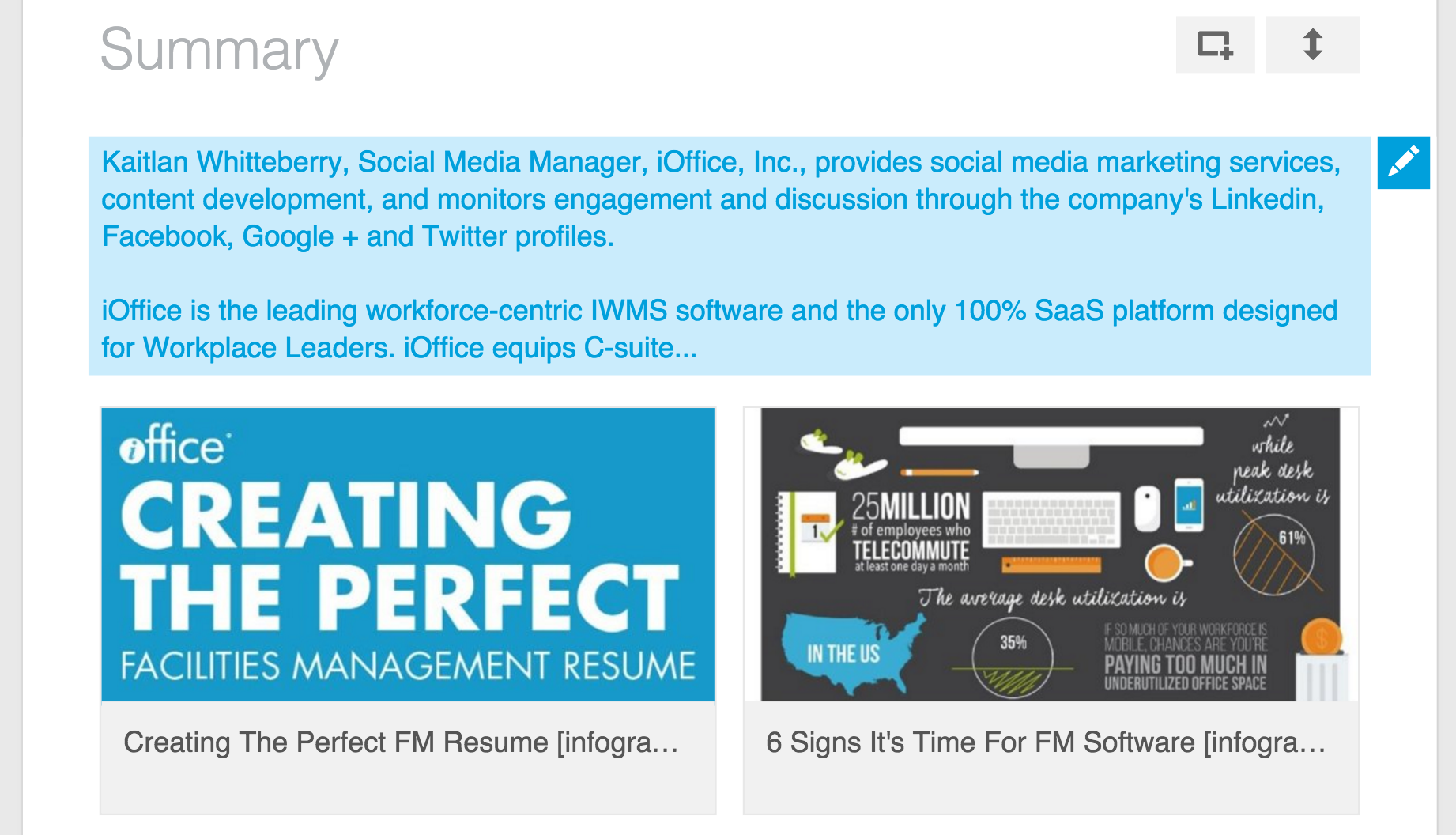Say What? A Guide to Social Media Character Limits


So you’re trying to market your workplace management company on social media, awesome job! You’ve come up with the perfect text to accompany your photo for Twitter, you’re typing in your tweet and then bam, you’re cut off mid-sentence. You forgot about Twitter’s 140-character limit and with the addition of your photo, you’re cut down to just 116 characters to work with. Each social platform has their own character limits in certain types of posts. For instance, Twitter has a 140-character limit on regular tweets, but allows for additional characters to be added to quotes on retweets. See how it can get a little confusing?
To make matters even more difficult, there are also restrictions on lengths of videos and text limits on status updates, but not on certain posts that don’t include media. You can add up to 60,000 characters on certain posts in Facebook, but are limited to just 155 in others. To keep everything straight, we’ve created a little cheat sheet for you. Bookmark this page, and when you’re drafting social media posts take a look to be sure you’re within the limit for each site. Below you’ll find two versions of our cheat sheet, a short and a long. Keep the short for quick references, and the long for more detailed descriptions on some of the limits for each page and helpful photos.
The Short List 
- Status Update: 63,206 characters
- Ideal Status Update: > 40 characters
- Company Description: 155 characters
- Company Title: 75 characters
- Comment on Post: 8,000 characters
- Tweet: 140 characters
- Ideal Tweet: > 100 characters
- Comment with a Retweet: 116 characters
- Link in a Tweet: Takes up 24 characters (leaving 116)
- Image or Video in a Tweet: Takes up 25 characters (leaving 115)
- Status Update: 600 characters
- Ideal Status Update: > 40 characters
- Professional Headline: 120 characters
- Professional Summary: 2,000 characters
- Position Title: 100 characters
Status Update: 63,206 characters
Now, this number may seem a bit random, and that’s because it is. According to an actual Facebook post, the creator of the original status update at Facebook, Bob Baldwin, had a little fun at work. He decided that he didn’t want the number to be exact. Many references say the limit is 60,000 – but the actual number is what’s listed above, 63,206 characters. Take a look at HubSpot’s image on a Facebook comment discussing this interesting fact.
Ideal Status Update: > 40 characters
Now the information stated in the above paragraph does not mean any user should ever post that many characters, although you technically could. Experts agree the ideal status update shouldn’t be longer than 40 characters for personal or company posts. This is because of the many messages your audience is bombarded with each time they log on to Facebook, they’re more likely to read a short sentence rather than a long paragraph. And that’s the whole point to being on social, is to reach your customers, right? Time to think of something short and sweet to say to your customers!
Company Description: 155 characters
When adding information about your company to your description, be sure to remember to leave enough room for your company’s URL. You want people to interact with you on your Facebook page, but also give them the opportunity to find out more about what you do by referring to your website. This description appears on your company page “About” section tab.

Comment on a Post: 8,000 characters
Yes, you read that right. Facebook users can post up to 8,000 characters in a post comment. Although, it’s not exactly recommended. Facebook allowed this to give room for users to spark meaningful discussions on topics in their newsfeed. It’s doubtful everyone is going to really read an 8,000 character comment, but it does allow users to really say what they have to say. There is discussion that the exact number can vary a bit depending on the types of bytes you’re using. But if you’re sticking to simple text, you should be granted 8,000 characters.
Ideal Tweet: >100 characters
We’ve all been well-versed in Twitter’s limit, but did you know that it’s even a better idea to shorten your tweet even more? People use Twitter to gather brief bursts of information regarding news, events and updates from companies or people they value. Usually these tweets lead to another link with a more detailed description of the topic, or a place to sign up for events or purchase goods. Use your creativity to come up with colorful, interesting tidbits of your overall topic, to catch people’s attention in the feed. It will definitely challenge you to be brief, but the results are worth the effort. Studies find shorter tweets get more interaction.
Comment in a Tweet: 116 characters
This is one way to get around Twitter’s limit if you absolutely must. Let’s say the user you want to retweet uses 140 characters exactly, well when you go to retweet them, you have the option to add commentary, up to 116 characters of commentary. This is a great way to reach out to other users or to reference an article or link that you feel your followers should enjoy that came from another account. To add a comment, click the arrow “retweet” button on another user’s tweet, as you see in the image below, it will automatically pop-up allowing you to add your comment. This is optional, however, and you can also simply retweet the original without adding any additional information.

Image or Video in a Tweet: Takes up 24 characters (leaving 116)
Both posting a link or adding an image to your tweet will take up 24 “characters” by Twitter’s size standards. This means that you will only have 116 characters remaining to make your statement. Although, sometimes photos can do much of the talking for you. When you want to post an image or video to your tweet, select the “Media” button at the bottom left corner of the screen. You can then add your file and Twitter will place it in your tweet for you. You can add up to four photos or videos, but remember, each one takes up 24 characters.

Status Update: 600 characters
When operating a company page or a personal page, you can make status updates to notify your connections of something interesting, educational or of any professional opportunities available at your workplace. This is very similar to the Facebook update. The 600 character limit applies to any text, images and links that are in the post as well.
Professional Headline: 120 characters
This is the brief description of your current role that appears right below your name on your profile. The 120 character limit does include any attachments you make to your company. This limit should be plenty, as your title shouldn’t need to be longer than the limit LinkedIn allows.
Professional Summary: 2,000 characters
Here is where you get to show off a little, and LinkedIn gives you the room to do so. The professional summary section appears right under your basic information on your LinkedIn page. Here you can go into more detail about your current position, your company, your accomplishments or a position you are seeking if you’re in the job market. LinkedIn also allows you to attach documents to better explain your work experience. You’ll notice below, once you add documents to your summary, the text portion will be shortened, but viewers will still be able to view the entire summary if they click on the text. The attached images and other documents do not count against your overall character total. So link away!
There you have it! The character count for many types of entries on the top three major social media sites. While it can often be frustrating that Facebook, Twitter and LinkedIn want to us to limit what we have to say, think of it as a positive challenge. You should know your company and your audience so well, it only takes a few words to get your message across. Need tips for types of social media posts you should be creating? Check out our blog, Creating Social Media Posts Your Audience Will Fall in Love With.

